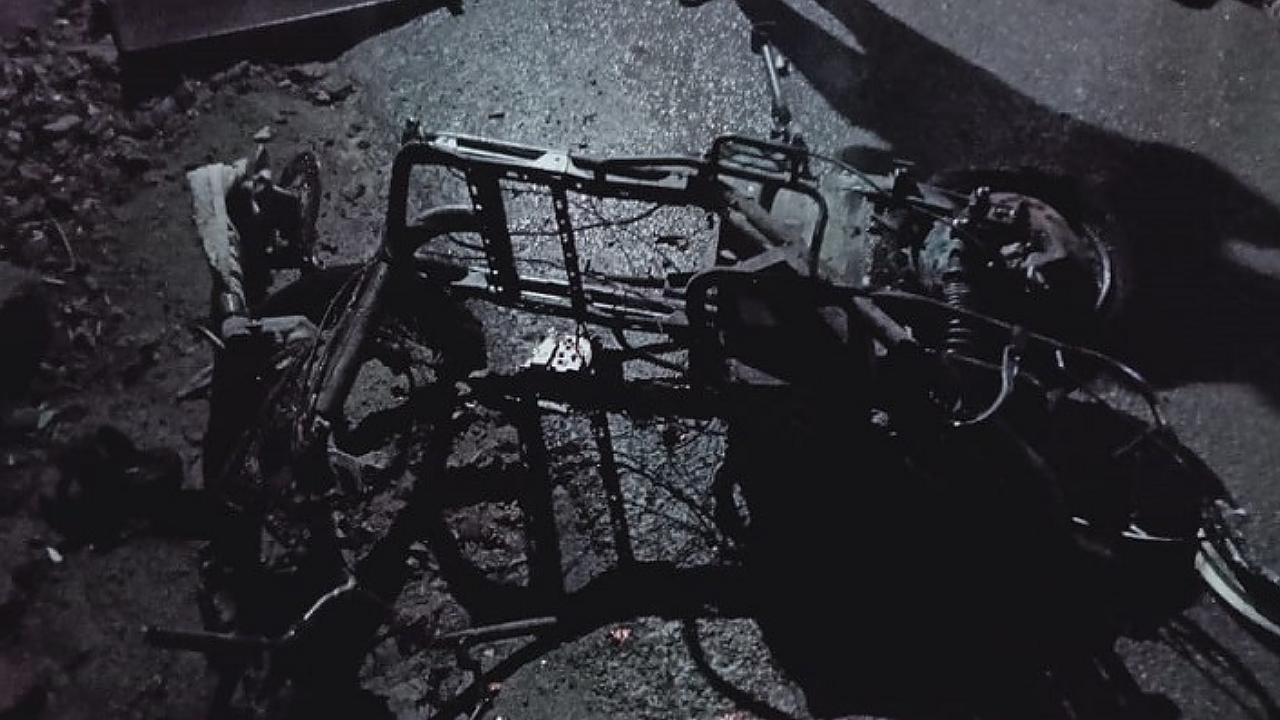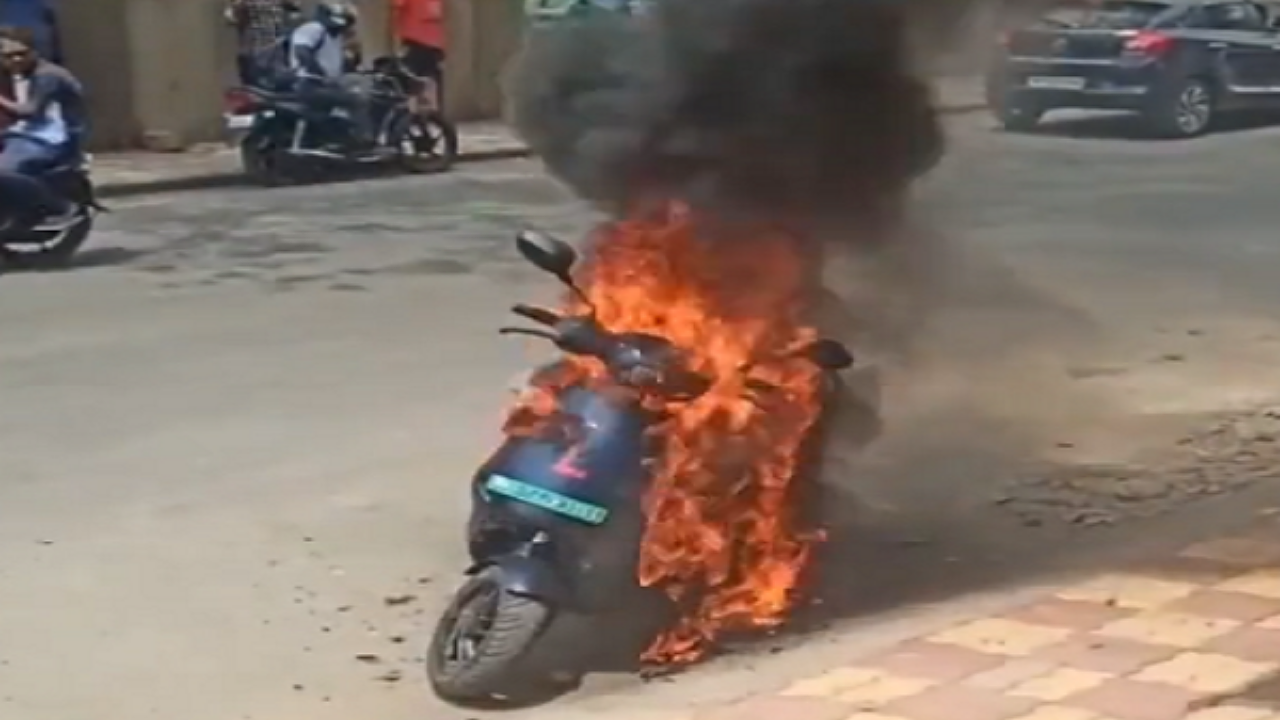
A report by the Centre of Energy Finance (CEEW) has forecast India’s electric vehicle (EV) industry to be an opportunity worth $ 206 billion by 2030. The government of India wants the country to commute on electric vehicles. But what are the chances of you investing in an EV after seeing one catching fire on the road and another e-bike going up in flames during charging, claiming the lives of a 49-year old man and his 13-year old daughter?
Probably only a hundred witnessed an Ola electric scooter catching fire in Pune on March 26, 2022, but thanks to social media, a video of the burning scooter, manufactured at one of Asia’s largest two-wheeler EV manufacturing facilities, has now probably been seen by crore of people, both in India and abroad.
Recently, a Haryana resident also lost his life as the lithium-ion battery of his scooter, sold by Gurugram-based HCD India, exploded. Last year, two Pure EV scooters and an Okinawa scooter had also caught fire.
“Remember what happened to Samsung as a brand, when multiple cases of Note 7 smartphones catching fire were reported? This definitely hampers the perception of a brand, and of a new category as well,” pointed out Faisal Kawoosa, Founder and Lead Analyst, TechArc.
He added, “Consumers become apprehensive about safety when something of this sort happens to a new product category. The concern of the potential EV consumers till now has been more on charging and range anxiety. These incidents have fuelled fire in the minds of the consumer about safety while handling EVs.”

EV Makers In A Hurry?
The answer to “why do EVs catch fire?” isn’t simple and straightforward. An EV can catch fire because of multiple problems, including issues relating to the battery management system, battery, wiring, housing, unexpected rise in temperature, and more. The crucial question, however, is “who is responsible for the safety of the consumers?” It is up to the EV and battery makers to make sure that the safety of the consumers is not compromised.
“Some people are in a hurry for market share. OEMs need to understand that EVs are a long-term business and not an e-commerce push. We need to understand to not be in a hurry to have a unit placement or market share. Instead of going for the numbers game, we need to focus on the safety and long-term viability of the product,” said the founder of a popular EV start-up, wishing not to be named.
Moreover, the road conditions are not the same everywhere.
“Lithium battery cells get disturbed on uneven roads. Irregular charging and temperature fluctuations also disturb these cells. While the EV brands are in a hurry to sell, I have not seen a single one of them taking out time to explain the essentials of battery manufacturing and battery maintenance to the end consumer,” said the founder.
Forget consumers, calls made to a few EV dealerships revealed that even the sales guys are not trained enough to explain the battery maintenance aspect. They make the best of sales pitches, but when it comes to battery upkeep, they had just one piece of advice – do not let the battery get wet, and do not charge it for more than four hours.
On being probed if this is what the product manual says, his reply was, “Sir, we have been selling scooters for over five years now. We are here if something happens.”
Lithium cells are delicate to handle. Disturbance in one cell leads to disturbances in other cells as well. “None of the battery or the EV OEMs will take the responsibility for such an incident. They will blame the road conditions or the irrational driving method behind the fire,” sources said. For the record, the maximum temperature in Pune on that fateful day was around 38° C.
Many professionals associated with the EV domain primarily blame the battery management system for such an incident. India depends on importing lithium cells for fulfilling its EV needs. These cells, once imported, are then organised and integrated with a BMS.
In an official statement, Ola noted that it is aware of an incident in Pune that happened with one of its scooters and is investigating to understand the root cause and will share more updates in the next few days. The Ola team, as per the statement, is in touch with the owner of the scooter that had caught fire. The company said that the customer is absolutely safe.
Chicken & Egg Story
Who takes the blame for such incidents – the EV OEM, the battery maker, road conditions or the consumer – is a chicken and egg story. Of course, the battery OEM can always blame the EV OEM, and the EV OEM can blame the consumer.
The truth, however, could be brought out by an independent third party, such as the Indian Institute of Technology. The same, as per Kawoosa, can also help EV brands in making sure they don’t become a part of unnecessary mud-slinging.
“There should be a neutral third party certification or testing done. The focus should be on finding out if the incident was with an isolated product or if the problem is in the whole line-up. There could be multiple reasons. There could be a need to teach users on how to treat such products safely and effectively,” said Kawoosa.
On the other hand, the founder, not wishing to be named, believes that battery charging at home should not be made legal for a brand unless it meets all the safety standards. He sees battery-swap as an option that can help the government and EV brands increase their adoption by making handling batteries safer.
“We need to have stringent norms of homologation of batteries. BIS certification might not be of any use in such cases. Additionally, we should transition to battery swaps faster. The same will do away with the need of charging EVs at home and make the product category safer,” opined the founder.